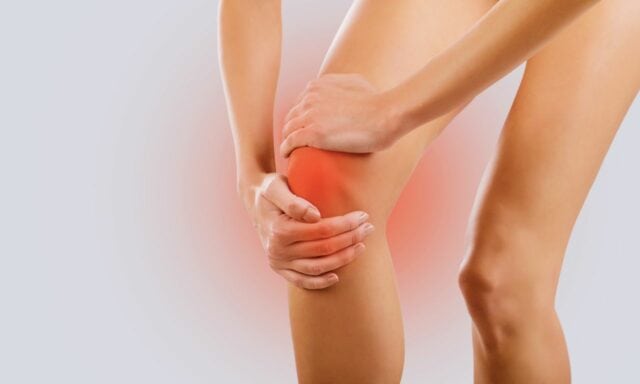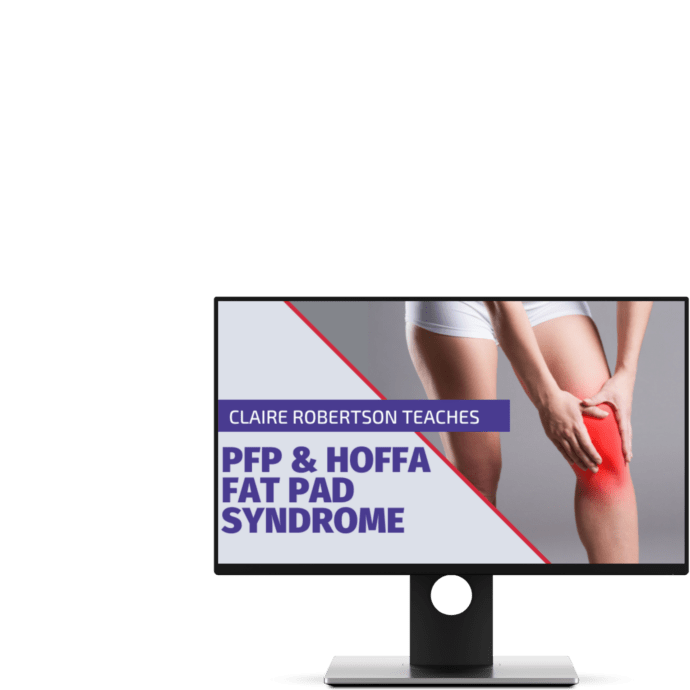Patellar Instability | Diagnosis & Treatment

Patellar Instability | Diagnosis & Treatment
Introduction & Pathomechanism
Patellar instability is mainly affecting active adolescent patients and peaks at the age between 10 and 20 years. It accounts for up to 3% of acute knee injuries and recurrence rates are variable according to the source but frequently seen.
Pathomechanism
The quadriceps tendon exerts a force on the patella that is slightly lateral to the midline and this is opposed by the vastus medialis and medial patellofemoral ligament. When anatomical characteristics like trochlear dysplasia, an increased Q-angle, patella alta, increased tibial tuberosity-trochlear groove distance and torsional abnormalities are present, they may further increase the risk of patellar instability or dislocation. Because of patellar subluxations or dislocation(s), the retropatellar cartilage collides with the lateral femoral condyle. As such cartilage defects are common and in about 90% of cases the medial patellofemoral ligament is ruptured or elongated. Traumatic dislocations are most frequently associated with more cartilage damage due to the high-energy mechanism.
Follow a course
- Learn from wherever, whenever, and at your own pace
- Interactive online courses from an award-winning team
- CEU/CPD accreditation in the Netherlands, Belgium, US & UK
Clinical Picture
Patellar dislocations occur most frequently during sports but in some cases can occur atraumatically. In a traumatic event, the knee is mostly flexed and subject to a valgus force or receives an anterior or medial blow to the knee. The patient will most likely tell you about the knee giving way and a “popping” sensation or sound that may be followed by swelling and possibly hemarthrosis. The majority of these injuries spontaneously reduce and sometimes the presence of hemarthrosis may be the only sign indicating that a luxation has occurred.
Two patient “types” experiencing patellar instability are proposed by Hiemstra et al. (2014)
- WARPS: Stands for “Weak, Atraumatic, Risky anatomy, Pain and Subluxation”. This group includes younger patients with diminished quadriceps strength and neuromuscular control (especially of the vastus medialis) and reduced core stability. This group is further associated with anatomical issues that contribute to their patellar instability and recurrency such as trochlear dysplasia, shallow and short trochlear groove, pes planus, a large tibial tuberosity-trochlear groove distance, increased ligamentous laxity, amplified patellar tilt, valgus limb alignment and rotational abnormalities of the tibia and femur. They present more frequently with symptoms of patellofemoral pain and recurrent subluxations rather than frank dislocation episodes. Movements requiring minimal force usually lie at the base of their instability symptoms and subluxations or dislocations occur often without trauma.
- STAID: “STrong, Anatomy normal, Instability and Dislocation”. This group includes more patients sustaining a patellar dislocation at a later age, and more unilaterally. They tend to have stronger quadriceps strength and core stability and no clear predisposing anatomical factors. The event of the dislocation is traumatic in nature and frequently they do not have any complaints of patellofemoral pain prior to sustaining the dislocation.
Examination
Inspection
In case the patella is still dislocated, it will be most likely displaced laterally. In more subtle cases of patellar instability with recurring subluxations, signs of quadriceps weakness and wasting are often visible. Assess limb alignment and the presence of an increased Q-angle. Many patients will have their limb in a valgus position, which can result from femoral anteversion, hyperpronation of the foot, or external tibial torsion, but equally from weak hip musculature
Functional assessment
Range of motion and lower extremity strength should be assessed bilaterally but comparison to normative values may be interesting in case bilateral strength deficits are present.
Provocation
Active examination
The J-sign can be indicative of patellar maltracking. Further, the (in)ability to move and load the knee joint as well as signs of apprehension during movement can be noted.
- Passive examination
Pain and swelling often impede a passive assessment. When possible, the examination often reveals tenderness at the medial epicondyle of the femur and patella, and apprehension during the lateral displacement of the patella. The lateral femoral epicondyle may be tender from the collision with the patella during dislocation and/or reduction. Tenderness over the origin of the medial patellofemoral ligament (Bassett sign) may be indicative of a ligamentous disruption. An increased lateral glide of the patella (2 or 3 quadrants of the patellar width) accompanied by apprehension can give an idea about ligamentous laxity or rupture.
General ligamentous laxity can be assessed with the Beighton score. Some authors describe a palpable defect along the medial retinaculum or medial patellofemoral ligament.
A positive patellar grind test may be suggestive of a chondral injury.
Lateral tilting of the patella may suggest a tight lateral retinaculum.
Follow a course
- Learn from wherever, whenever, and at your own pace
- Interactive online courses from an award-winning team
- CEU/CPD accreditation in the Netherlands, Belgium, US & UK
Treatment
Initiate full weight bearing as tolerated and progress range of motion gradually together with proprioception and strength rehabilitation. Hypermobility can increase the risk of sustaining a dislocation of the kneecap, so good strength and neuromuscular control throughout the whole range of movement are important.
- Stability of the patellofemoral joint is maintained by the static stabilizers (joint anatomy), active stabilizers (M. Quadriceps femoris), and passive stabilizers (retinacular ligaments). Since only the active stabilizers can be trained with conservative management, effective strengthening should initially focus on opposing the patella’s excessive lateral displacement and the knee valgus position. Therefore vastus medialis and gluteal musculature can be targeted already early in rehabilitation. The patient should be strong enough to withstand external rotation moments induced by valgus forces, for example during tackling in rugby. Here also the hamstring musculature plays an important role.
- Bracing or McConnell taping can help the patient return to participating in sports activities or overcome their fear of loading the knee in the first phase of rehabilitation. Hinged knee braces or lateral stabilization braces may enhance the patient’s sense of stability and increase their trust in the knee.
References
Follow a course
- Learn from wherever, whenever, and at your own pace
- Interactive online courses from an award-winning team
- CEU/CPD accreditation in the Netherlands, Belgium, US & UK
Update your Knowledge about Patellofemoral Pain by Gaining Insights into the Latest Research


What customers have to say about this online course
- Esra06/02/25Leuk en nuttig! Leuke cursus. Leuke afwisseling tussen tekst, video en toetsjes. Prettig dat de tekst in het Nederlands was.Linda Valk01/01/25Pfp syndroom cursus Hele fijne cursus, met duidelijke uitleg, zowel theoretisch als praktisch duidelijk.
- Erik Plandsoen31/12/24PFP & Hoffa fat pad syndrome Hele fijne cursus, met duidelijke uitleg, zowel theoretisch als praktisch duidelijke oefeningen.Anneleen Peeters22/12/24Great! Super interesting and insightful. Definitely a great tool to freshen up and expand on previous knowledge.
- Ronald Dols13/12/24Top cursus Mooie holistische benadering van een veelvoorkomend probleem.Olivier21/11/24Goede cursus! Hele goede cursus!
- Berfin Karagecili03/09/24Patellafemoraal pijn en fat pad syndroom Patellafemoraal pijn en fat pad syndroom
Hele duidelijke uitleg met instructie video’s. de tussentijdse toetsen waren ook handig om zo 100% uit je stof te kunnen halen.Martijn de Bruijn24/05/24PATELLOFEMORAL PAIN & FAT PAD SYNDROME It was a great course by Claire!! Nice explanation of the examination and treatment modalities.
Also the sport specific parts were very helpful. - Jean-Christophe Di Ruggerio04/03/24PATELLOFEMORAL PAIN & FAT PAD SYNDROME Great course with a knee expert!Seppe van den Audenaerde09/12/23PATELLOFEMORAL PAIN & FAT PAD SYNDROME GREAT COURSE THAT OPENED MY VIEW ON KNEE PAIN
Because of the way Claire looks at the knee joint and its surrounding joints, I learned a lot and it opened my eyes. Will look into her other courses for sure! - Alvin Chi24/07/23PATELLOFEMORAL PAIN & FAT PAD SYNDROME BEST PFPS RESOURCE I HAVE FOUND
I cannot recommend this course enough. I stumbled upon this course through the physiotutors podcast, and Claire’s episode on there intrigued me enough to purchase the course. As someone who treats PFPS every day, I have yet to find a resource that tries to personalize treatment for the patient rather than broadly treating all patients the same. Claire goes into detail on how physical exam findings lead to different treatment options. I wish this course was available 10 years ago. I highly recommend this course and hope Claire continues to contribute more courses on physiotutors!Cesare Cambi15/06/23PATELLOFEMORAL PAIN & FAT PAD SYNDROME COURSE ABSOLUTE AMAZING
The course has given me a very deep and practical insight over the PFPS’ patients. it was full of nice and important clinical and practical tips for everyday usage, thing that I really enjoyed and appreciated
I personally liked the most the sections regarding the assessment strategies and the brace and taping’s techniques, but overall a must-do course on for anyone interested in improving his/her skills in the treatment of Knee pain. - Lorna Thornton-McCullagh14/06/23PATELLOFEMORAL PAIN & FAT PAD SYNDROME THANK GOODNESS FOR CLAIRE PATELLA
What a brilliant course. A colleague had attended her course and recommended it to me- I never fancied attending London so when it came on line I grabbed the opportunity. Claire P always presents complicated material clearly and thoroughly without the normal physiotherapist pomp and circumstance. This course has been well researched with up to date evidence and well conveyed- THANK GOODNESS FOR CLAIRE PATELLAGeorge Hill12/05/23PATELLOFEMORAL PAIN & FAT PAD SYNDROME Excellent course by Claire Robertson, I thoroughly enjoyed it. Learned so much!. Well done physiotutors, keep up the great work you guys are doing. - Hannah Toppets06/12/22PATELLOFEMORAL PAIN & FAT PAD SYNDROME PFP & FAT PAD SYNDROME
Great course with nice video’s and clear info on the objects. Also nice to have a little quiz after each chapter. Nice to know how to tape and sport-specific rehab.



